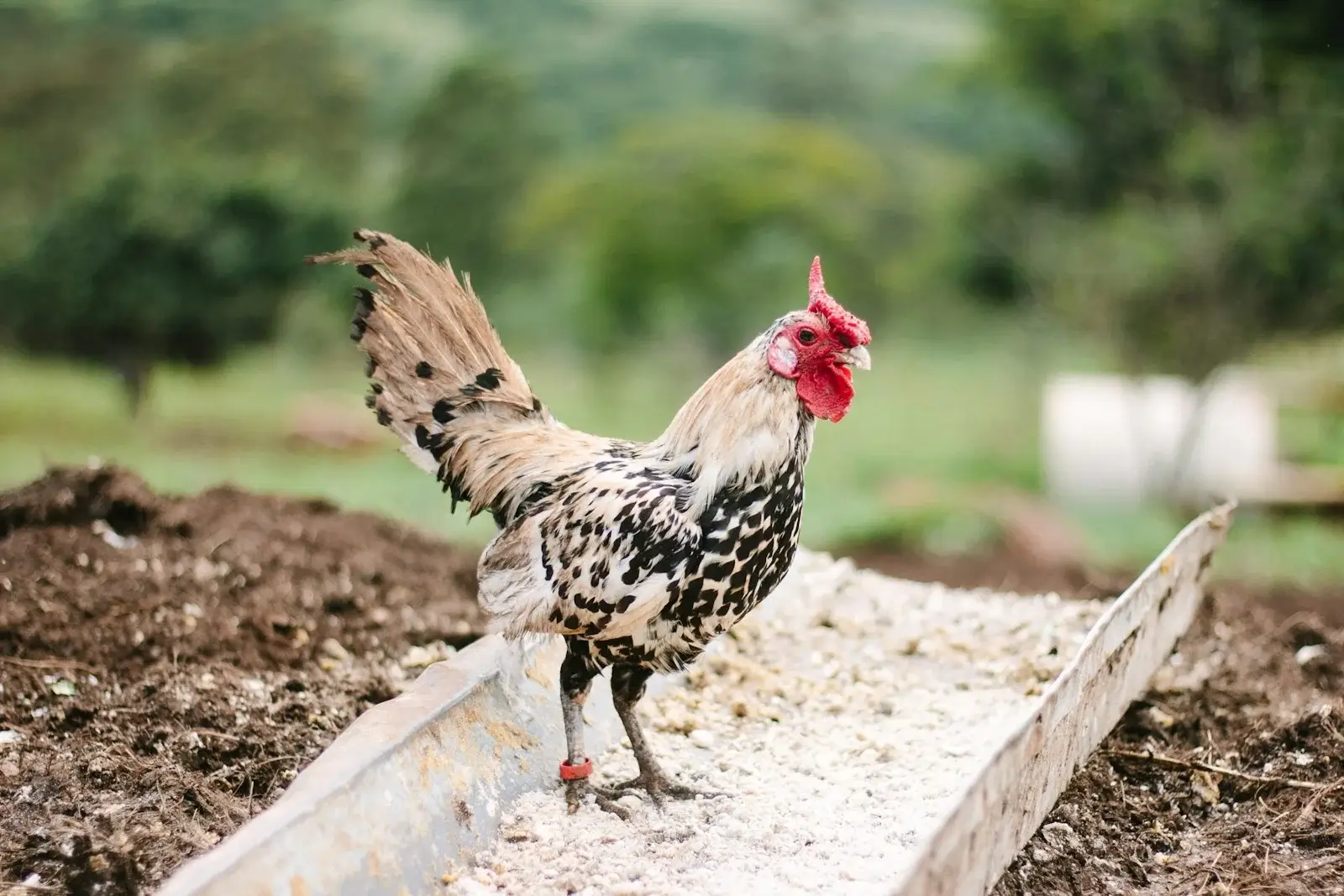No poultry breed is as common and famous in East Africa as the kienyeji chicken. Even though we do not know whence it came and when, this poultry breed has been reared for at least decades if not more.

As a result, we can refer to kienyeji chicken being indigenous to East African. In this article, we will look at some key characteristics of kienyeji poultry as well as their pros and cons.
You may also be interested in our comparison of improved kienyeji breeds compared and our study that showed that pure kienyeji can lay 150 – 180 eggs per year. We’ve also looked at organic poultry farming.
You may also be interested in types and function of the chicken comb and our quick look at chicken’s genetics.
Characteristics of kienyeji chicken
Feeding
From our experience as well of others, kienyeji chicken are not heavy feeders. Their feeding rate can also be understood from their growth rate and egg productivity. Basically, since they take longer to mature and generally have less body mass at maturity, their feeding rate is naturally lower.
In contrast breeds that have high growth rate, high egg production rate and high body mass at maturity are heavy feeder.
For optimal outcomes, we recommend sufficient and nutritional feeding of your kienyeji chicken. From our experience, this helps boost their health and egg production rate. FYI Kukufarm app now features a complete poultry farm dashboard.
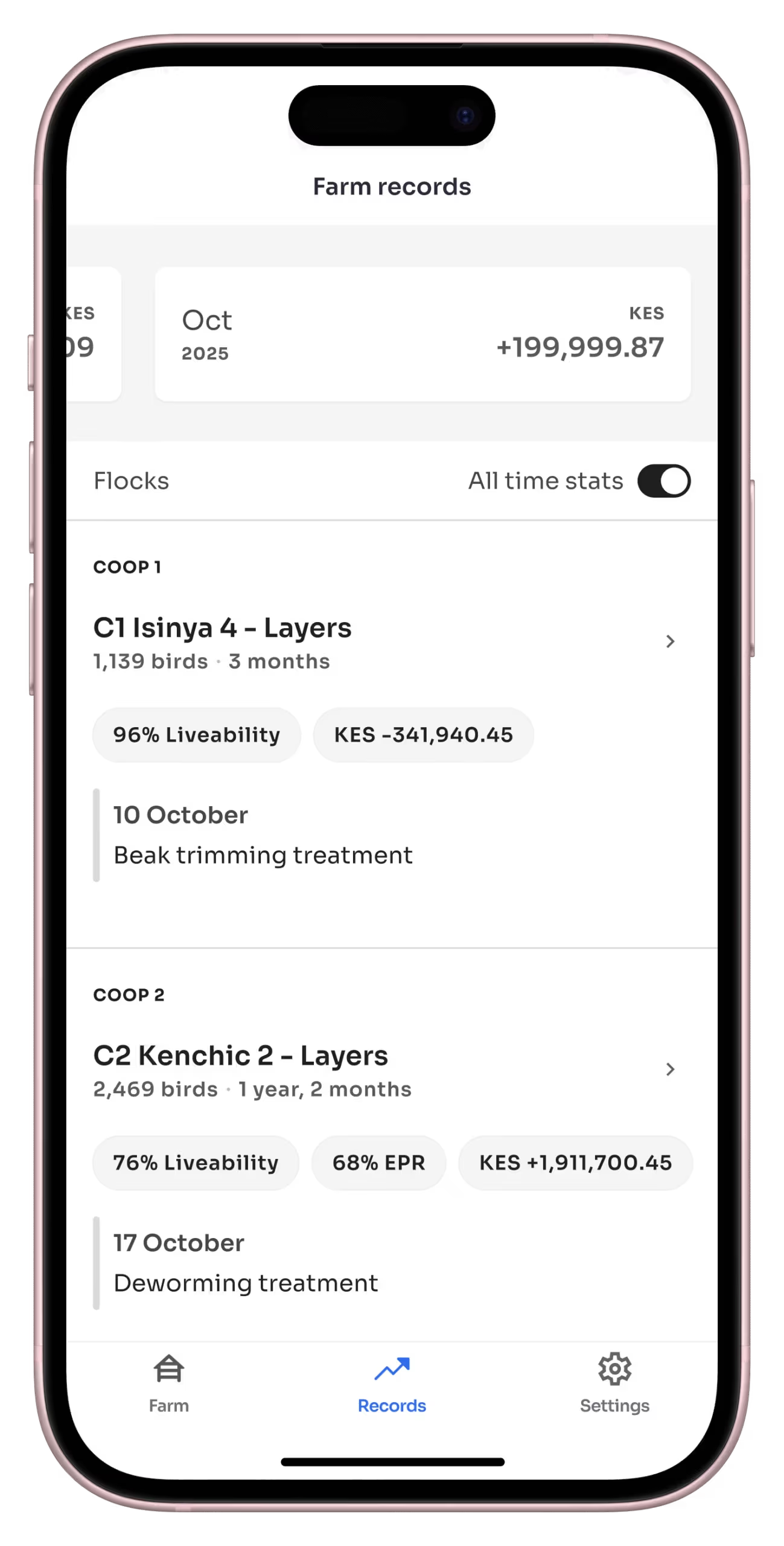
Disease resistance and hardiness
One unique characteristic of kienyeji poultry is their hardiness to survive even solely on foraging and their high disease resistance.
Typically, unlike other poultry breeds such as improved kienyeji and grade chicken, kienyeji chicken rarely get diseased. Moreover, they do not need to be vaccinated. As far as we know, there is not even a vaccination schedule specifically for kienyeji chicken.

Manage your poultry farm and keep flock records with Kukufarm – get it on Google Play and App Store.
However, this is not to say that you do not need to apply proper flock management to your kienyeji flock. On the contrary proper management of kienyeji chicken will result to improved productivity and flock yield.
For instance, when introducing new chicken to your flock, it is recommended to quarantine them for observation. This is in order to avoid introducing a sick chicken to your flock.
Temperament
Usually, kienyeji chicken are not friendly. Only in rare cases will they allow you to come close to them. As a result, they can be said to be mindful of their own space when humans are in their presence.
Moreover, they can get easily spooked if they see a strange face or animal coming close to them. Additionally still, they are wary of being preyed by flying bird predators and will make a lot of noise and run for cover when they see such predators.
However, when they are in their familiar space, they are calm, very curious and avid foragers.
In addition, kienyeji hens are very protective of their chicks and will attack you if you try to get too close to them. Similarly, kienyeji roosters are also very protective of the flock. They will make noises to inform you of their displeasure at making the flock uncomfortable in any way, and even attack you.
Brooding
Kienyeji chicken are excellent brooders. With proper flock management and feeding, kienyeji hens frequently get broody. For this reason, they are a perfect breed for backyard farming since as a farmer you can increase your flock as need be.

If you’re looking to hatch chicks with your kienyeji chicken, it is advisable to obtain eggs from a different farm to avoid in breeding. Alternatively, you can obtain roosters from another farm.
In addition, you will want to have a good rooster to hen ratio in your coop, depending on the poultry housing system you are using, to minimise aggression and stress within your flock.
Egg production
Kienyeji chicken can be expected to start egg production between 6 – 8 months, or week 24 – 32.
Since not much data is out there on the production rate of kienyeji chicken, we did a 30-day study and achieved a 48% egg production rate.

However, we cannot say more about their egg production cycle since we do not know exactly when they hit peak egg production and when they stop laying eggs altogether.
Maturity and body mass
Kienyeji chicken in comparison to other poultry breeds take longer to mature. Usually around 6 to 8 months. Therefore, they also take longer to start laying eggs, usually around 6 to 8 months.
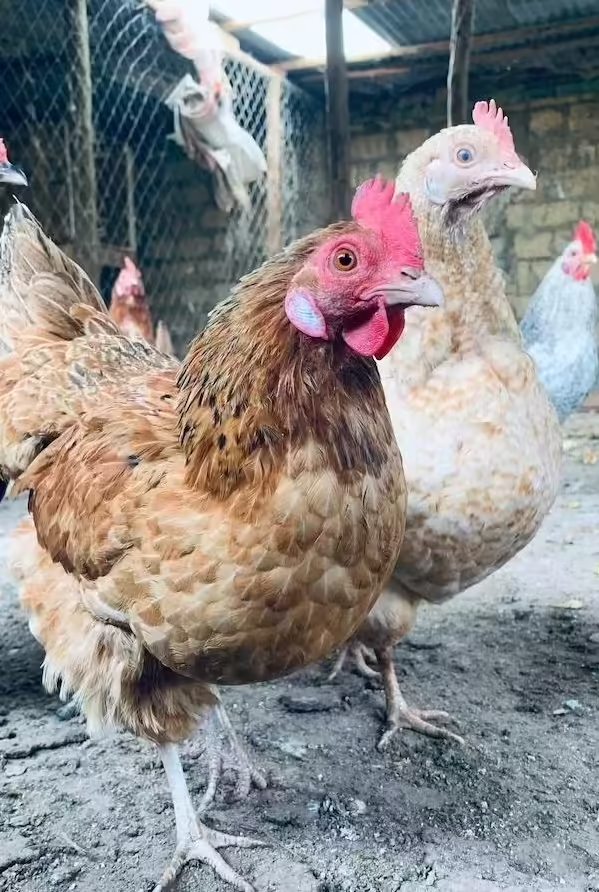
In contrast to other breeds such as improved kienyeji and grade broilers, kienyeji chicken have less body-weight at maturity. A hen can weigh 1.2 – 1.5 kgs while a rooster can weigh upto 1.3 – 1.8 kgs, give or take.
Produce quality
Meat and eggs from kienyeji chicken are known for their unique flavour. As a result, kienyeji produce is a local delicacy in East Africa.
Generally, egg and meat from kienyeji chicken are more expensive than those of grade chicken. The quality of their produce is usually attributed to their slow growth rate.

Life span
Kienyeji poultry, with proper flock management can live long. However, we do not know the exactly how long they can live or what their life expectancy is.
ChatGPT thinks 5 – 8 years but we take that with a grain of salt. If you have actual data, drop us a comment below.
You may be interested in knowing the life expectancy of various poultry breeds. Some chicken can live upto 20 years. The oldest known chicken lived to 16 years.
Pros and cons of kienyeji chicken
Based on their characteristics, we can easily chart the pros and cons of kienyeji poultry breed.
Although we list 4 pros and 4 cons, numbers alone do not tell the story. That is because kienyeji are loved both by backyard farmers and commercial farmers. Moreover, their produce is highly demanded by consumers.
As a result, your choice to rear kienyeji chicken may come down to a personal preference. It is definitely a profitable venture and can be started on a shoe string budget.
Also see our comparison of pure VS improved kienyeji and 8 Hidden benefits of record keeping in poultry farming.

